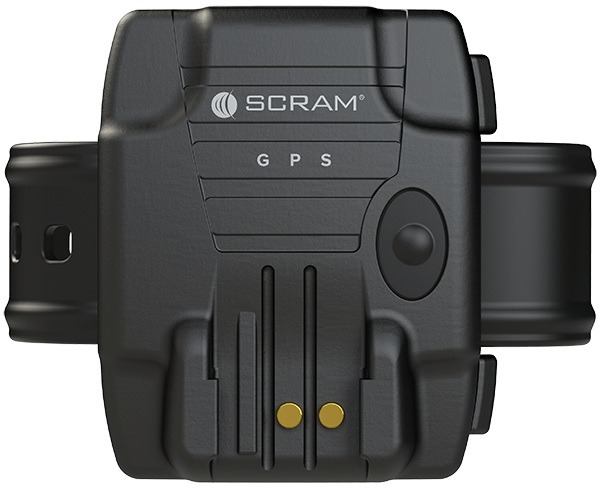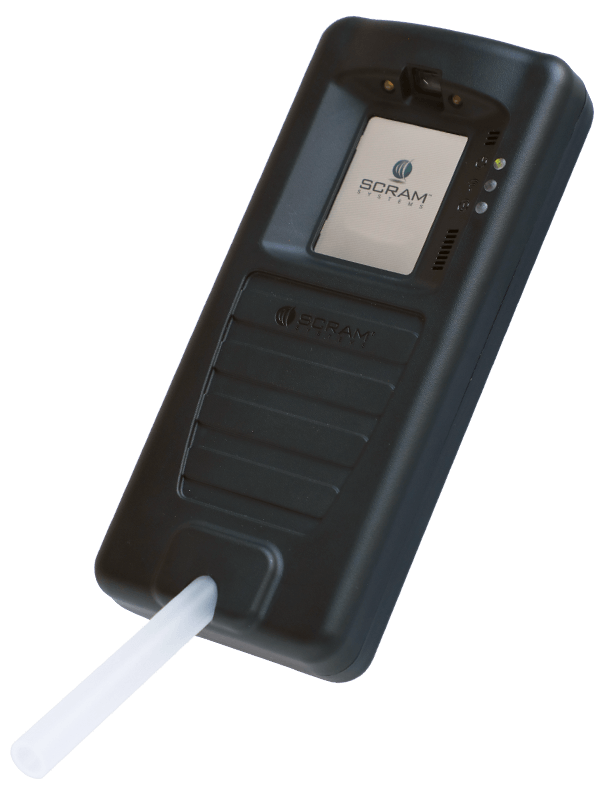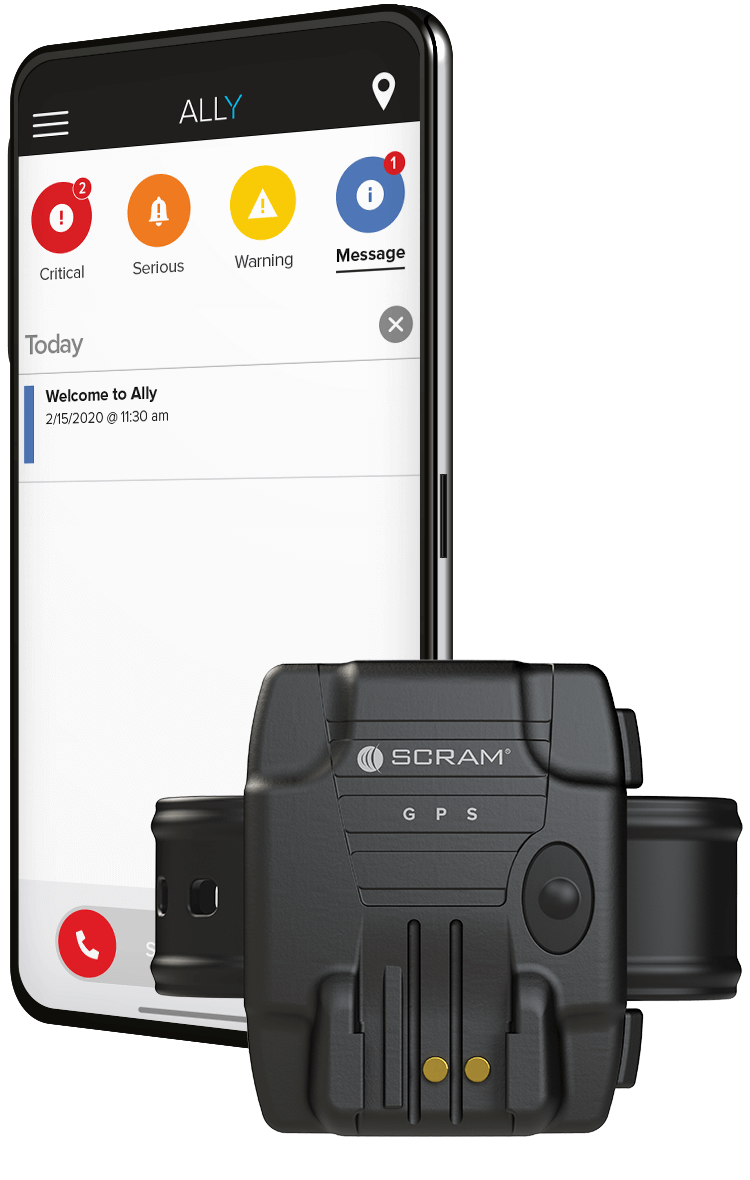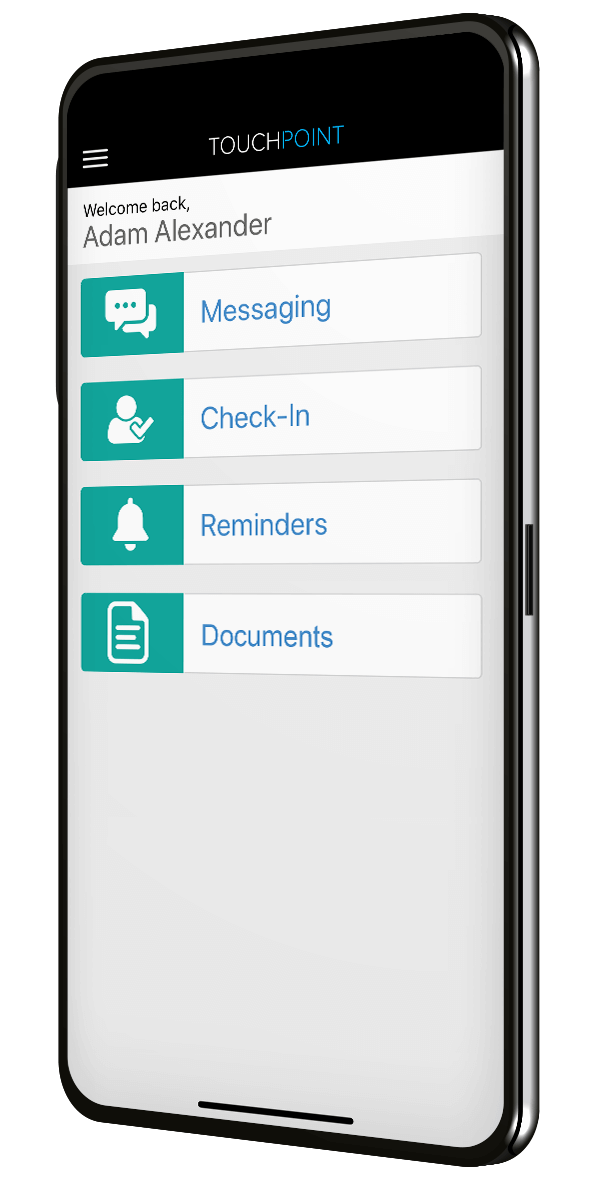Pretrial & Post Trial Services
A Risk Management Company

24/7
Alcohol Monitoring
&
GPS Monitoring

Alternative's to Incarceration & The Reduction of Offender Recidivism.
We deploy the best technology in the business. SCRAM SYSTEMS!
We believe there are times a person needs to sit in jail or prison. We also believe we are all human and make mistakes. Jail is not always the answer. However there are times a person needs to monitored and helped in the right direction.
From DUI, petty theft, stalking, and even some drug crimes. A person sitting in jail can destroy their life. They can loose their job, their home and even their family. In some cases this can be worse on society, than having an alternative that can help guide the person, a reminder if you will. Something that can help move the person in the right direction, to be a productive member of society.
Jurisdictions around the country are putting increasing emphasis on community supervision over incarceration in order to achieve better outcomes, reduce recidivism, and curtail the staggering costs that come with jail and prison stays. By using alternatives like electronic monitoring technologies, community corrections departments are enhancing client supervision and accountability.
If you are a Bail Agent, Probation Officer, Parole Officer, a person representing a County Sherriff’s Office, Drug Court Administrator or Director, Judge or person appointed by a Judge to find a solution, or a family member of a person that is having a problem with alcohol. Contact Us about our 24/7 program, and find out we can help you, your agency, or court.
SOLUTIONS
Improve Community Safety with Electronic Monitoring and Software
Jurisdictions around the country are putting increasing emphasis on community supervision over incarceration in order to achieve better outcomes, reduce recidivism, and curtail the staggering costs that come with jail and prison stays. By using alternatives like electronic monitoring technologies, community corrections departments are enhancing client supervision and accountability.
The SCRAM Systems suite of alcohol and location monitoring devices, software, and mobile apps provide the foundation that community corrections need to efficiently supervise and manage their diverse caseloads. Our fully integrated solutions help streamline case management and provide flexible options based on risk and need, all while enhancing community safety.
APPLICATIONS FOR COMMUNITY CORRECTIONS
Pretrial
From court-mandated sobriety to curfew requirements and location restrictions, our solutions can be used to monitor client compliance in accordance with pretrial conditions.
Probation
Electronic monitoring of probationers helps manage client accountability, supports public safety, and has been proven to improve outcomes at a greatly reduced cost. We provide integrated options in alcohol, location, and mobile monitoring for enhanced supervision of probation caseloads.
Parole
Those on parole may be more likely to re-offend if not adequately supervised. Home confinement, GPS location tracking, and continuous alcohol monitoring can be used to assist with reentry and rehabilitation while holding them accountable and enhancing public safety.
Technology-Driven Program Solutions to Curb DUI/DWI Recidivism
With over one million drunk driving arrests each year in the U.S., alcohol-impaired drivers pose serious dangers to their communities. In fact, research shows that while two-thirds of those arrested for drunk or impaired driving will commit only one offense, the rest will eventually reoffend. Alcohol-involved crimes put a strain on the resources of law enforcement, courts, and community corrections. State and county DUI/DWI programs are innovative initiatives that utilize alcohol monitoring technologies to tackle serious criminal behaviors including repeat alcohol clients and domestic violence.
Technology-driven alcohol monitoring has been a key factor in many of the country’s most successful alcohol programs because it enables officers to effectively supervise high-risk impaired drivers in the community. SCRAM alcohol monitoring solutions help state and county DUI/DWI programs enforce accountability and compliance, reduce recidivism, and address the root cause of drunk driving: alcohol misuse, abuse, and addiction.
STATE AND COUNTY DUI/DWI PROGRAM EXAMPLES
24/7 Sobriety Programs
24/7 Sobriety Programs address repeat drunk driving and other alcohol-related offenses by separating participants from the root cause of their crimes: alcohol. Program participants are tested daily for alcohol consumption with monitoring technology like SCRAM CAM and SCRAM Remote Breath Pro.
Using Electronic Monitoring as an Alternative to Incarceration
The high costs of incarceration, prison overcrowding, and a political push for criminal justice reform have all contributed toward a policy shift in many jurisdictions. Communities across the country are implementing alternatives to incarceration and reserving imprisonment for the most dangerous criminals. Many jurisdictions incorporate electronic monitoring into their work release programs, alternative sentencing options, and intermediate sanctions in lieu of incarceration.
The SCRAM Systems suite of electronic monitoring devices, software, and mobile apps provide an innovative approach to community reintegration while supporting jail and prison depopulation strategies. With our solutions, officers can effectively monitor their diverse caseloads, reduce imprisonment costs, enhance public safety, and ensure clients fulfill the conditions of their release.
Pretrial Release
From court-mandated sobriety to curfew requirements and location restrictions, our solutions can be used to monitor client compliance in accordance with pretrial conditions.
Bail & Sentencing Reform
Electronic monitoring offers a less restrictive option to divert the use of jail as a bail condition that often results in mass incarceration. Our suite of monitoring solutions provides a variety of supervision options that support bail and sentencing reform strategies.
Supporting Bail and Sentencing Reform
With Community Supervision
With 2.2 million incarcerated Americans across the country—a 500% increase over the last 40 years—bail and sentencing reform offers opportunities for the criminal justice system to significantly reduce prison and jail populations. Changes in law and sentencing policy contribute to this increase and long prison and jail sentences create barriers to successful reintegration. But successful reentry planning combined with technology-driven programs and services can positively impact outcomes for justice-involved populations.
The SCRAM Systems suite of alcohol and location monitoring devices, software, and services help ease the burden of reentry by providing structure and flexibility into the community supervision process. Evidence-based program models that properly assess a client’s risk and need to improve client outcomes and reduce recidivism more effectively than imprisonment. By leveraging technology, community supervision can enable courts and agencies to easily monitor clients while decreasing the dependence on incarceration.
MORE ABOUT BAIL AND SENTENCING REFORM
Risk Assessment
Properly assessing a client’s risk and need levels are crucial when determining the type and intensity of their supervision requirements. Our software solutions work with risk assessment tools to help compile a client’s criminal, mental health, substance abuse history, and more so officers can assign an effective monitoring regimen.
Funding Challenges
Funding challenges are a common reason courts and jurisdictions hesitate to add intensive alcohol and location monitoring to their programs. However, electronic monitoring services can be funded locally by the courts or service user payment plans, saving money by leaving jail space for only the most dangerous criminals.
Decriminalization
As decriminalization laws are developed, jurisdictions need to find new ways to assess the risk and need of criminal justice populations. Our electronic monitoring and mobile check-in solutions give jurisdictions the tools they need to supervise those who are not incarcerated.
Addressing Drunk Driving and Reducing Recidivism with Technology
Despite significant progress over the past few decades, drunk and impaired driving continues to pose a significant public safety threat for communities. According to NHTSA, drunk driving crashes claim over 10,000 lives per year in the United States, costing about $44 billion annually. Reducing drunk and impaired driving requires the combined efforts of courts, agencies, lawmakers, and the implementation of innovative state and county DUI programs to tackle the issue.
The most successful drunk and impaired driving reduction strategies leverage technology in conjunction with court-ordered participation in alcohol programs. Requiring clients to abstain from alcohol and be subject to continuous alcohol monitoring is proven to be effective in reducing drunk driving recidivism. SCRAM alcohol monitoring solutions help DUI programs assess clients, enforce accountability and compliance, promote sobriety, and address the root cause of drunk driving: alcohol misuse, abuse, and addiction.
APPLICATIONS FOR DRUNK AND
IMPAIRED DRIVER CASELOADS
Low-Risk Alcohol Offenders
Representing the majority of those in the system, low-risk clients include first-time offenders or those with a lower BAC at the time of their arrest. SCRAM Remote Breath Pro provides proportional sobriety monitoring and can be used with SCRAM TouchPoint for additional supervision.
High-Risk Alcohol Offenders
High-risk clients, including hardcore and repeat alcohol clients, account for the most serious alcohol-related crimes and require more intensive supervision and long-term monitoring. SCRAM CAM is proven to support true behavior change in high-risk clients. (We Are Not Yet Offering the SCRAM CAM. Future Deployment)
Treatment Courts
Treatment courts across the country are dedicated to changing the behavior of clients to reduce recidivism. Continuous alcohol monitoring is officially recognized by NADCP as an effective technology for monitoring clients in both Drug and DWI Courts.
24/7 Sobriety Programs
24/7 Sobriety Programs address repeat drunk driving and other alcohol-related offenses by separating participants from the root cause of their crimes: alcohol. Program participants are tested daily for alcohol consumption with monitoring technology such as SCRAM CAM and SCRAM Remote Breath Pro.
Monitoring Technology and Software to Support Family Safety
According to the U.S. Department of Justice’s Bureau of Justice Statistics, in 75% of all domestic violence cases, the victim perceives the abuser to be under the influence of alcohol. Because perpetrators of domestic violence often suffer from substance abuse issues and may inflict psychological, emotional, sexual, and physical abuse, supervision to ensure separation from the victim is essential. Family and victim safety and client accountability are key, and agencies require flexible options in order to customize the type of supervision that is appropriate for these high-risk clients.
The SCRAM Systems suite of alcohol and location monitoring devices, software, and mobile apps allow agencies to tailor supervision models to a client’s risk and need and easily increase or decrease supervision when necessary. The ability to utilize any type of location or alcohol monitoring in one, integrated platform is ideal for programs managing domestic violence caseloads.
APPLICATIONS IN DOMESTIC VIOLENCE
AND FAMILY CASELOADS
Family Court
Our alcohol and location solutions can be used in combination with one another to help keep victims safe and aid clients on their path to sobriety and prove their compliance in family court.
Supervised Visitation/Custody
In child custody cases that require supervised parenting time or involve substance abuse, alcohol monitoring can provide additional confidence. This not only benefits relatives and visitation supervisors but visiting parents who can reinforce their sobriety with concrete data.
Child Abuse & Neglect
Cases of child abuse and neglect involving drug or alcohol dependence are often contingent on the parent or guardian providing evidence of their sobriety in court. Electronic monitoring technology can provide professionals with the data they need to make the most informed decisions.
24/7 Sobriety Programs
24/7 Sobriety Programs address repeat drunk driving and other alcohol-related offenses by separating participants from the root cause of their crimes: alcohol. Program participants are tested daily for alcohol consumption with monitoring technology such as SCRAM CAM and SCRAM Remote Breath Pro.
Voluntary Sobriety Monitoring
The ability to prove sobriety can be a critical recovery tool. Many former SCRAM CAM clients have attested that knowing they were monitored 24/7 provided them additional motivation to stay sober. Being able to voluntarily submit to supervision may be a significant turning point in a client’s recovery process. (We Are Not Yet Offering the SCRAM CAM. Future Deployment)
Monitoring Technology to Support Terms
of Supervision and Rehabilitation
With an estimated 1.2 million violent crimes per year and over 750,000 registered sex offenders nationwide, monitoring and rehabilitation for these types of caseloads are imperative during community supervision.
For sex and violent offenders that are on pretrial release, probation, or parole, electronic monitoring can provide them with the motivation to participate in treatment programs and comply with the terms of their release and supervision. The SCRAM Systems suite of alcohol and location monitoring devices, software, and mobile apps provide officers with convenient and flexible supervision options to properly monitor sex and violent offenders and ensure community safety.
APPLICATIONS FOR SEX AND
VIOLENT OFFENDER CASELOADS
Pretrial
From court-mandated sobriety to curfew requirements and GPS monitoring, our solutions can be used to monitor clients’ compliance with pretrial conditions while awaiting adjudication.
Probation and Parole
Those on probation or parole are often high-risk, high-need clients. Home confinement, GPS location tracking, and continuous alcohol monitoring can be used to assist with reentry and rehabilitation while holding clients accountable and increasing community safety.
High-Risk Offenders
High-risk clients require more intensive supervision and long-term monitoring to reduce recidivism and modify criminal behaviors. Our electronic monitoring solutions can help support true behavior change.
Supervision Tools for Those That Require Less Intensive Monitoring
Research shows that one-size-fits-all supervision programs don’t work. In fact, lower- and mid-risk clients can experience negative outcomes when supervision isn’t proportional to their level of offense. Too intensive monitoring and overly harsh sanctions can result in an increase in criminal behavior, difficulty maintaining employment, and may disrupt prosocial relationships. The most effective and cost-efficient programs tailor supervision requirements to fit each individual client’s risk and need.
The SCRAM Systems suite of alcohol and location monitoring devices, software, and mobile apps can be used in any combination to help ensure clients comply with the conditions of their supervision while improving public safety. Our solutions give officers the data they need to easily assess an individual’s risk and need and provide flexible supervision tools for the continuum of clients to help them get and stay on track.
APPLICATIONS FOR LOW-RISK
OFFENDER CASELOADS
First-Time DUI Offenses
About two-thirds of those arrested for drunk or impaired driving will not reoffend. SCRAM Remote Breath Pro provides an effective way to monitor low-risk alcohol clients for compliance with sobriety conditions.
Home Confinement
For low-risk clients with home confinement orders, SCRAM House Arrest is the industry’s most flexible RF curfew monitoring system that provides the supervising agency with confirmation that the client is in their home when required.
(For House Arrest Clients we deploy the SCRAM GPS and Optional SCRAM Beacon we find it is a more cost effective solution.)
Mobile Client Monitoring
The SCRAM TouchPoint mobile app can be used as a standalone monitoring and engagement tool and increases accountability and compliance by streamlining common officer and client interactions.
Intensive Monitoring Technology that
Cultivates Long-Term Behavior Change
High-risk offenders, oftentimes undeterred by incarceration or fines, tend to have frequent encounters with law enforcement and pose significant risks to the community. These individuals commonly face longer periods of probation and parole and require intensive monitoring and longer-term supervision for true behavior modification.
Whether it’s a hardcore drunk driver, sex, or violent offender, the SCRAM Systems suite of alcohol and location monitoring devices, software, and mobile apps enable officers to make more informed decisions and create supervision plans that support client compliance and better outcomes. The use of electronic monitoring solutions that offer integrated analytics and reporting are invaluable tools that can help curb criminal recidivism while improving public safety.
APPLICATIONS FOR HIGH-RISK
OFFENDER CASELOADS
Hardcore Drunk Drivers
For high-risk, hardcore drunk drivers that find themselves in a DUI/DWI Court, SCRAM Continuous Alcohol Monitoring is the tool judges turn to in order to enforce the highest level of compliance while on the difficult road to recovery.
Repeat Alcohol Offenses
While two-thirds of those arrested for drunk driving will commit only one offense, the rest eventually re-offend. Continuous alcohol monitoring is also the only monitoring technology that has been empirically shown to support long-term behavior change—imperative to reducing recidivism.
Domestic Violence Caseloads
Domestic violence caseloads require balancing victim and community safety and appropriate supervision requirements. We offer flexible options in monitoring technology to support compliance with protective orders, substance abuse treatment, and to ensure physical separation from the victim.
Supporting Pretrial, Treatment, and Recovery
with Monitoring Technology
Millions of Americans suffer from opioid addiction and those that use opioids are 13 times more likely to be involved in the criminal justice system. Many opioid-addicted clients participating in treatment and rehabilitation programs often relapse with or turn to alcohol as a substitution for drug use—beginning a new cycle of alcohol abuse that could lead to alcohol-related offenses.
While advancements have been made in recent years to help curtail the opioid epidemic the criminal justice system is still overwhelmed with drug- and alcohol-addicted individuals. Because drug testing is not enough for opioid users, SCRAM Continuous Alcohol Monitoring and SCRAM Remote Breath Pro provide effective monitoring solutions for clients that turn to alcohol as a replacement for opioid addiction.
APPLICATIONS FOR ALCOHOL
AND OPIOID CLIENT CASELOADS
Treatment Courts
Treatment courts across the country are dedicated to changing the behavior of participants to reduce recidivism. Continuous alcohol monitoring and decision support software are effective solutions for monitoring clients in drug courts.
Decriminalization
As decriminalization laws are developed, jurisdictions need to find new ways to supervise those who are not incarcerated. SCRAM CAM provides an ideal way to ensure opioid users are staying sober and not reoffending.
(At this time we are not offering SCRAM CAM. We deploy SCRAM REMOTE BREATH PRO)
How EBP Can Reduce Recidivism and Improve
Outcomes in Community Corrections
With growing caseloads and shrinking budgets, corrections departments and programs across the country are being challenged to find new ways to do more with their limited resources. Prisons and jails are becoming increasingly reliant on community corrections to alleviate overcrowding and provide adequate supervision and treatment services to help justice-involved individuals reintegrate while keeping their communities safe. With the need for innovative and cost-effective methods to reduce criminal recidivism, where should community corrections turn?
Years of behavioral research has uncovered the components that make up the most effective community corrections programs, and evidence-based practices (EBP) embody the core of this research. EBP combines empirical research with client behavioral data to guide corrections officers in the decision-making process and have the greatest positive impact on client outcomes. Governed by eight guiding principles and backed by science, EBP provides the baseline for effective intervention for justice-involved populations.
For example, when correctional rehabilitation programs appropriately match services and treatment to the risk and need profiles of clients, they can be 15-20% more effective at reducing criminal recidivism. This includes applying swift, certain, and fair rewards for accomplishments, as well as sanctions for program violations.
However, many corrections departments lack the resources, capacity, and expertise to adequately integrate EBP into their daily business practices. This “gap in EBP” creates barriers to implementation, often resulting in corrections departments to continue “business as usual” with strained budgets and ineffective programs.
Fortunately, new technology, detailed implementation guides, and extensive training for officers are helping pave the way for corrections departments to successfully integrate EBP into their daily decision making and client supervision and treatment programs.

24/7
Alcohol Monitoring
GPS Monitoring
Paladin Pretrial & Post Trial Services, LLC
The images of SCRAM SYSTEM equipment and information contained within this page and site, that has been supplied to
Paladin Pretrial & Post Trial Services, LLC By SCRAM SYSTEMS are the sole property of SCRAM SYSTEMS.
Copyright © 2025 |Paladin Pretrial & Post Trial Services, LLC





